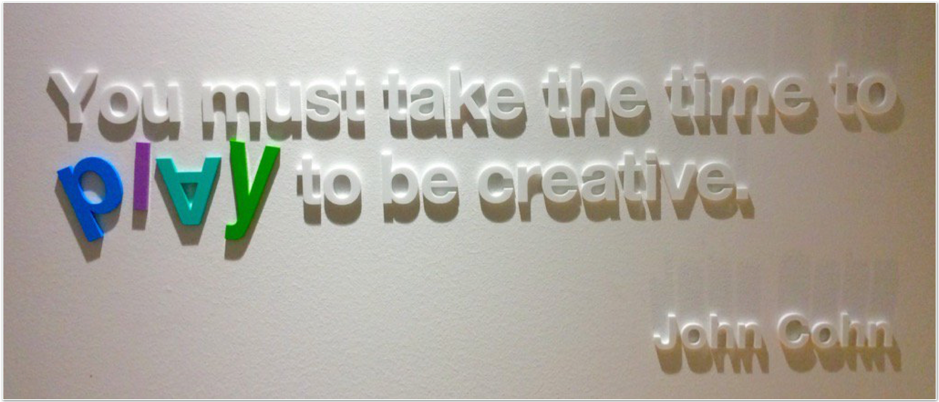Perspectives
The Future of Work is (More) Fun – Part 1
20 June, 2019 | Written by: Holly Cummins
Categorized: Artificial Intelligence | Perspectives
Share this post:
The Future of Work is (More) Fun
With traditional industries and roles being disrupted by technology, it’s tempting to feel uneasy. But with it has come the rise of new collar employment, the reduction of toil with automation, the replacement of bureaucracy with collaboration and creativity. These changes are part of a general trend of work becoming more fun.
To understand this further, we need to break down what we mean and perceive to be fun. Across all definitions of ‘what is fun’ you find the ‘positive affect’ – that it is enjoyable. Exploration is a focused investigation, play is done for its own sake and has no rules, a puzzle has rules and a goal, and a game has rules but also has a clear winner. Carrying on with the taxonomy, work has a goal but no rules (or at least, not the same kinds of rules as a boardgame or a video game). What we do at work is sometimes work, but it’s sometimes exploration or solving a puzzle.
Current research on workplace culture
The business value of happiness
The evidence that fun boosts productivity is compelling. A happy work environment means fewer sick days, harder work, and greater productivity. Research shows individuals with a positive mindset are 31% more productive than those with a negative mindset – or even a neutral one. Think of it like a placebo effect for the workplace; just as taking a sugar pill can trigger a healing effect as powerful as that of a ‘real’ drug, thinking tasks are achievable actually makes them so.
Although a sustained happy mindset with underpinnings in a positive company culture is clearly best, even a very brief episode of fun can boost productivity; one study found that watching a comedy video right before doing an exercise boosted participants’ performance by 12%. Just a few laughs already makes us more effective employees.
Collaboration, co-creation, and play
Other workplace trends are also helping to make work more enjoyable. We’re seeing a rise of both collaboration and co-creation. The social aspect of making things as a team is fun, and can make work a highly enjoyable place to be.
We’re also seeing more flexibility with both work schedules and work locations. Many of us adjust our work hours to fit in with external commitments and to adjust to workloads. A few decades ago, being at work almost always meant being in work. The general availability of broadband and the rise of remote collaboration tools like email, Sametime, Slack, and web conferencing now mean work can be done almost anywhere. There are still big benefits to co-location (hello, serendipitous communication and frictionless collaboration), but those may be partially or fully offset by the ability of remote-friendly businesses to attract talent which lives pretty much anywhere. I can tell from the occasional pictures of volcanoes and beaches in my twitter feed that one of the IBM Fellows, Grady Booch, lives in Hawaii, and I’m pretty sure that’s not where the rest of his team sit.
One of my personal heroes is John Cohn, another IBM Fellow (his official title) and professional mad scientist (unofficial title). When he’s not working for IBM, John does things like craft 30-foot mass-audience-participation keyboards and pink elephants that blows pink smoke for rock bands. Or at least, I assume John did his giant-elephant-making outside of work time; I didn’t actually ask him. What I admire about John is that he’s a big advocate of the importance of play for creativity.

John’s thoughts on play are stuck to the wall in the IBM IoT Centre in Munich.
Working hours and productivity
One of the things which can make work un-fun is that it takes up so much of our time – but it doesn’t need to. It has long been known that working longer hours does not necessarily lead to greater productivity. During the height of the industrial revolution, factory owners aimed to maximize the utilization of valuable factories by having them run for as many hours as possible. A standard working week was 6 days, and working days could be as long as 16 hours. Working hours were gradually reduced in response to social pressure, but even by 1900, the average American factory working day was still between 12 and 14 hours (and 100-hour weeks were not uncommon). In 1926, the Ford Motor Company was one of the first businesses to adopt a 5-day week and an 8-hour day. Surprisingly, the effect of shortening the working day was that workers produced more cars. Even though Ford had also raised employee wages, Ford’s profits surged.
A hundred years later, it is still the case that working more does not lead to greater productivity. Among the 30 most productive countries in the world, there is very little correlation between productivity ranking, average work week, and amount of paid vacation.
One of the reasons long working hours are bad for productivity is that they’re bad for workers. Long hours have both physical health consequences and mental health ones. A study of UK government employees found that those who worked over 11 hours a day were almost 2.5 times more likely to have a major depressive episode than those who worked 8-hour days.
In the future, will we all be working even fewer hours? Perhaps. In general, working hours in Europe and Japan have reduced since 1980. Some businesses have experimented with four-day weeks or five-hour workdays, and seen productivity stay the same, or even climb. In 1930, economist John Keynes predicted that his grandchildren’s generation would only work three hours a day. (He chose that figure as it would allow people to meet their basic economic needs, plus include some ‘extra’ labour to ensure people still felt the contentment that comes from working.)
Even though average working weeks are declining, statistics show many workers aren’t feeling the benefit. Despite an overall decline in Japanese working hours, Karōshi (death by overwork) remains a troubling phenomenon in Japan. Although less extreme, American working hours are bucking the global trend and rising, particularly for knowledge workers. The reasons for this are complicated, and include presenteeism, prestige associated with busy-ness, financial pressure, social expectations, and always-connected workplaces. Since we know that these long working hours don’t actually help individuals or their companies achieve more, we can be optimistic and hope they stop in the future.
Working shorter hours doesn’t necessarily make work itself more fun; but it leaves more time to pursue other fun interests outside of work. In a happy circularity, having the time to be creative outside of work can lead to more mental acuity and creativity in work.
Un-fun and waste
There’s another aspect to fun. Not only do we work more effectively when we’re having fun, activities that are fun are often more effective. Many of the activities we dislike, we dislike because we know that, fundamentally, they’re wasteful. Think about interminable meetings, status reporting, nitpicky reviews, bureaucracy, form-filling, repetition … not fun, right? Many of those are also not useful – or at least, the same value can be achieved in a much more efficient way which is also more entertaining for everyone involved.
Workplace culture
Workplace culture also has a big impact on productivity. There is mounting evidence that high-performing organizations have Westrum generative cultures. Ron Westrum identified three types of organizational culture. In pathological ones, cooperation was low, responsibilities were shirked, bridging was discouraged, novelty was crushed, every failure had a scapegoat, and messengers were shot (figuratively, not literally). Clearly, working in this kind of place would not be fun – what’s worse, these sorts of organizations tend to see low performance and be vulnerable to costly disasters.
Things are slightly better in a bureaucratic organization. In such organisations, the rules are the most important thing, so there is modest cooperation, narrow responsibilities, and when problems happen, justice is delivered. Messengers are ignored and novel ideas or environmental changes tend to create problems. Although it wouldn’t be as depressing as working in a pathological organization, working there wouldn’t be much fun, either.
What about organizations Westrum describes as generative? There’s high cooperation, risks are shared, bridging is encouraged, and novelty is implemented. If something goes wrong, the organization tries to discover a root system cause instead of creating a scapegoat. Not only are messengers not punished, they’re actively trained. A key component of a generative culture is empowerment and alignment. Employees understand their organization’s mission and find meaning in it. They feel able to make positive changes, and as a result they act creatively. Business results are brilliant, retention is high, and dangerous failures are (in general) avoided. And it feels good.
Of course, even in the future, not every organization will be a generative one; but we know that’s the model successful organizations will be moving towards. That’s a good thing, because those generative workplaces will be happier and nicer workplaces.
Work being meaningful and work being fun aren’t exactly the same thing, of course – but there’s a substantial crossover. Work that’s valueless and repetitive usually is neither meaningful nor fun, whereas fun work and meaningful work feels good.
In the second part, I will discuss automation, artificial intelligence and the challenge of bias.

WW Development Discipline Leader - Cloud Garage IBM Cloud and Cognitive Software
Frontier Fusion: Accelerating the Path to Net Zero with Next Generation Innovation
Delivering the world’s first fusion powerplants has long been referred to as a grand challenge – requiring international collaboration across a broad range of technical disciplines at the forefront of science and engineering. To recreate a star here on Earth requires a complex piece of engineering called a “tokamak” essentially, a “magnetic bottle”. Our […]
Unlocking the Future of Financial Services with IBM Consulting at Think London 2024
In a world where financial services are evolving at an unprecedented pace, staying ahead of the curve is crucial. The recent IBM Think London event, IBM’s flagship UK event, brought together industry leaders, partners, and clients to explore how cutting-edge technologies like generative AI and hybrid cloud infrastructure are transforming the sector. For IBM […]
Converting website traffic into happy customers with a smart virtual assistant
With a long track record of guiding companies across various sectors through digital transformation, IBM Business Partner WM Promus is now focusing AI innovation. Eileen O’Mahony, General Manager at WM Promus, explains how her company helped a UK-based commercial finance brokerage enhance customer experience, and develop new sales leads using IBM watsonx and IBM […]





























